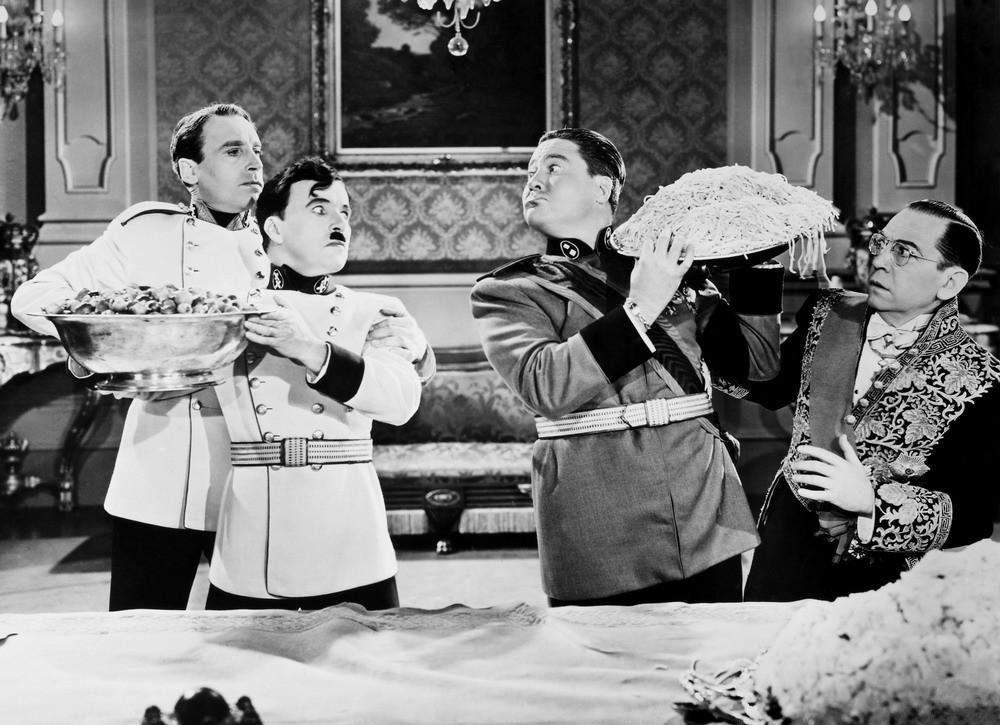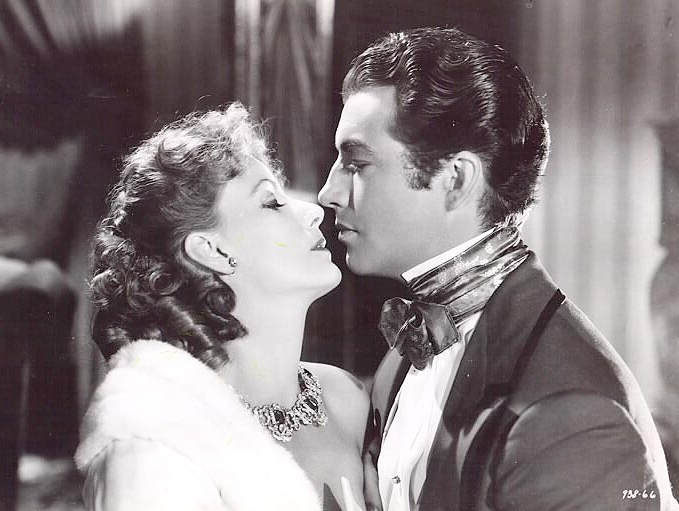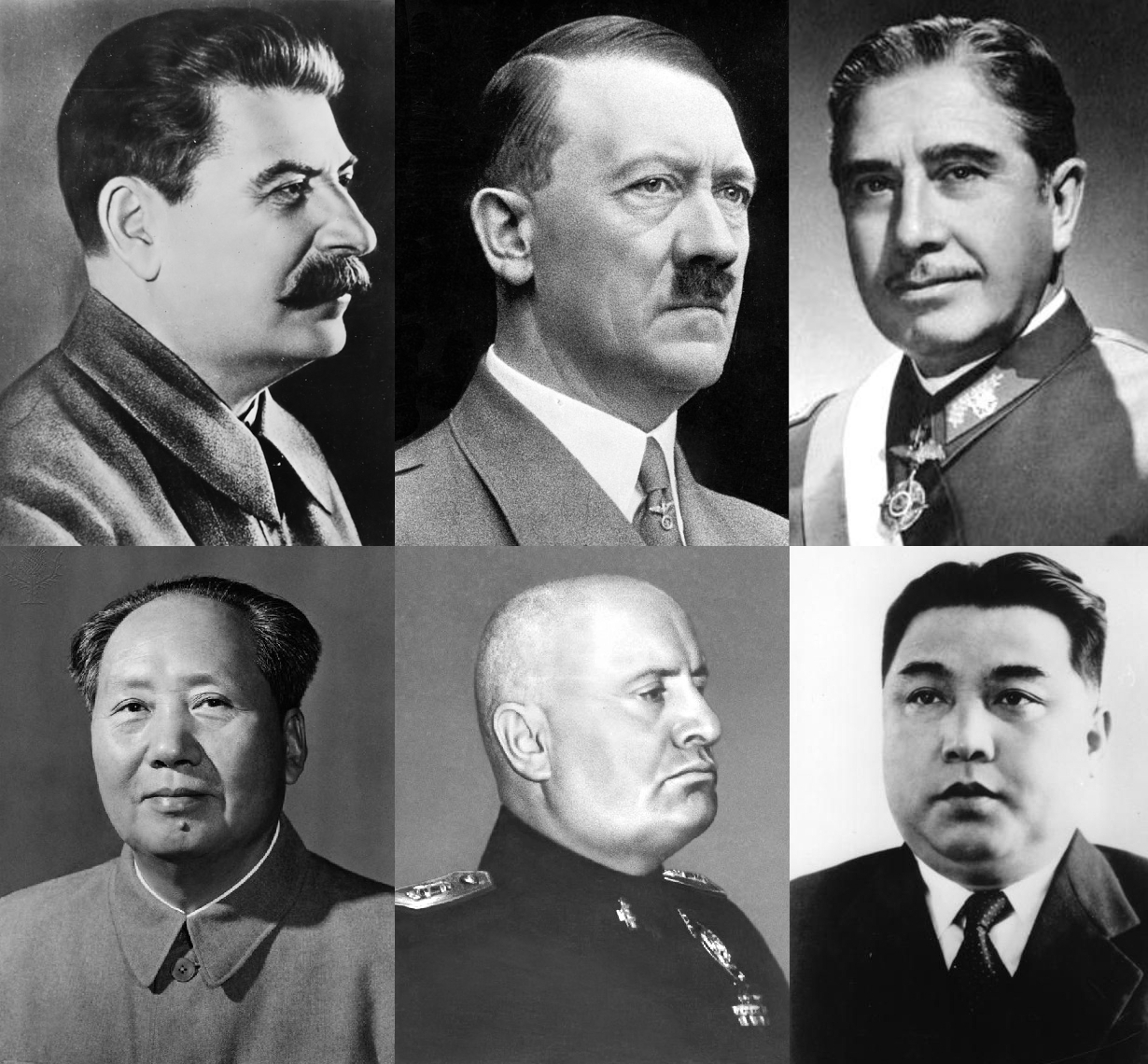|
Henry Daniell
Charles Henry Pywell Daniell (5 March 1894 – 31 October 1963) was an English actor who had a long career in the United States on stage and in cinema. He came to prominence for his portrayal of villainous roles in films such as '' Camille'' (1936), ''The Great Dictator'' (1940), '' The Philadelphia Story'' (1940) and ''The Sea Hawk'' (1940). Daniell was given few opportunities to play sympathetic or 'good guy' roles; an exception was his excellent portrayal of Franz Liszt in the biographical film of Robert and Clara Schumann, ''Song of Love'' (1947). His name is sometimes spelled "Daniel". Biography Early life Daniell was born in Barnes, then lived in Surrey, and was educated at St Paul's School in London and at Gresham's School in Holt, Norfolk. English stage He made his first appearance on the stage in the provinces in 1913, and on the London stage at the Globe Theatre on 10 March 1914, in a walk on role in the revival of Edward Knoblock's '' Kismet''.Henry Daniell, Briti ... [...More Info...] [...Related Items...] OR: [Wikipedia] [Google] [Baidu] |
Camille (1936 Film)
''Camille'' is a 1936 American romantic drama film from Metro-Goldwyn-Mayer directed by George Cukor, and produced by Irving Thalberg and Bernard H. Hyman, from a screenplay by James Hilton (novelist), James Hilton, Zoë Akins, and Frances Marion. The picture is based on the 1848 novel and 1852 play ''The Lady of the Camellias, La dame aux camélias'' by Alexandre Dumas, fils, Alexandre Dumas. The film stars Greta Garbo, Robert Taylor (American actor), Robert Taylor, Lionel Barrymore, Elizabeth Allan, Jessie Ralph, Henry Daniell, and Laura Hope Crews. It grossed $2,842,000. ''Camille'' was included in ''Time Magazine's All-Time 100 Movies'' in 2005. It was also included at #33 in AFI's 100 Years...100 Passions. Plot Beautiful Marguerite Gautier (Greta Garbo) is a well-known courtesan, living in the Demimonde, demi-monde of mid-19th century Paris. Marguerite's dressmaker and procuress, Prudence Duvernoy (Laura Hope Crews), arranges an assignation at the theatre with a fabulously ... [...More Info...] [...Related Items...] OR: [Wikipedia] [Google] [Baidu] |
Kismet (play)
''Kismet'' is a three-act play written in 1911 by Edward Knoblauch (who later anglicised his name to Edward Knoblock). The title means Fate or Destiny in Turkish and Urdu. The play ran for 330 performances in London and later opened in the United States. It was subsequently revived, and the story was later filmed several times and adapted for the 1953 musical. History ''Kismet'' was first produced by Oscar Asche at the Garrick Theatre, London, on 19 April 1911. Knoblock wrote the play for Asche, with the understanding that Asche could revise it. He shortened and partly re-wrote it and produced it with much success, playing Hajj, the leading man, with Lily Brayton as Marsinah, the leading lady. The costumes were designed by Percy Anderson. The music was composed by Christopher Wilson. The production ran for 330 performancess. The play was then accepted by the Theatrical Syndicate, and staged at the Knickerbocker Theatre in New York, produced by Harrison Grey Fiske. It op ... [...More Info...] [...Related Items...] OR: [Wikipedia] [Google] [Baidu] |
Jeanne Eagels
Jeanne Eagels (born Eugenia Eagles; June 26, 1890 – October 3, 1929) was an American stage and film actress. A former Ziegfeld Girl, Eagels went on to greater fame on Broadway and in the emerging medium of sound films. She was posthumously nominated for the Academy Award for Best Actress for her 1929 role in '' The Letter'' after dying suddenly that year at the age of 39. Early life Eugenia Eagles was the second of six children born to Edward, of German and French Huguenot descent, and his wife Julia Eagles (née Sullivan), who was of Irish descent. Her birth year – depending on the source – is given as 1888, 1890 (official bio year), 1891, 1892, 1893 (death certificate), or 1894. Jeanne, who later changed the spelling of her surname to "Eagels", would later claim that her father was a Spanish architect and she was born in Boston. In reality, she was born in Kansas City, Missouri and her father was a carpenter. Eagels attended St. Joseph's Catholic School and Mo ... [...More Info...] [...Related Items...] OR: [Wikipedia] [Google] [Baidu] |
Jealousy (1929 Film)
''Jealousy'' is a 1929 American pre-Code drama film directed by Jean de Limur and released by Paramount Pictures. It is based on the French play ''Monsieur Lamberthier'', by Louis Verneuil. The play was translated by Eugene Walter and ran on Broadway under the title ''Jealousy'' in 1928. The film version starred Jeanne Eagels and Fredric March, and is the second sound film and final motion picture featuring Eagels. The film was initially shot with British actor Anthony Bushell as Pierre, but he was replaced by March at Eagels' insistence. Supporting actress Hilda Moore died before ''Jealousy'' was released, while the film's star, Jeanne Eagels, died of an overdose of chloral hydrate one month after the film was released. Cast * Jeanne Eagels as Yvonne *Fredric March as Pierre *Halliwell Hobbes as Rigaud *Blanche Le Clair as Renee *Henry Daniell as Clement *Hilda Moore as Charlotte *Carlotta Coerr as Louise *Granville Bates as Lawyer *Virginia Chauvenet as Maid Preservation st ... [...More Info...] [...Related Items...] OR: [Wikipedia] [Google] [Baidu] |
Dictator Charlie4
A dictator is a political leader who possesses absolute power. A dictatorship is a state ruled by one dictator or by a small clique. The word originated as the title of a Roman dictator elected by the Roman Senate to rule the republic in times of emergency (see Roman dictator and ''justitium''). Like the term ''tyrant'', and to a lesser degree ''autocrat'', ''dictator'' came to be used almost exclusively as a non-titular term for oppressive rule. In modern usage the term ''dictator'' is generally used to describe a leader who holds or abuses an extraordinary amount of personal power. Dictatorships are often characterised by some of the following: suspension of elections and civil liberties; proclamation of a state of emergency; rule by decree; repression of political opponents; not abiding by the procedures of the rule of law, and the existence of a cult of personality centered on the leader. Dictatorships are often one-party or dominant-party states. A wide variety of leader ... [...More Info...] [...Related Items...] OR: [Wikipedia] [Google] [Baidu] |
Ina Claire
Ina Claire (born Ina Fagan; October 15, 1893February 21, 1985) was an American stage and film actress. Early years Ina Fagan was born October 15, 1893 in Washington, D.C. After the death of her father, Claire began doing imitations of fellow boarders in the boarding house where she and her mother, Cora, and brother, Allen, were forced to live. Claire's mother took her out of school in the eighth grade, and she used her mother's maiden name when she began her career appearing in vaudeville. In 1906, she gave a recitation as the grand finale of a program presented by Miss Cora B. Shreve's pupils in Washington, D.C. She was identified in a newspaper article as Ina Claire Fagan. Career Claire made her professional stage debut in October 1907 in Elmira, New York. She played Florie in a production of ''The Fatal Flower'' — the beginning of a two-year contract. In 1909, she appeared in a vaudeville act entitled "Dainty Mimic", which included an imitation of actor Harry Lauder. A b ... [...More Info...] [...Related Items...] OR: [Wikipedia] [Google] [Baidu] |
The Awful Truth (1929 Film)
''The Awful Truth'' is a 1929 American pre-Code romantic comedy film directed by Marshall Neilan and starring Ina Claire and Henry Daniell. It was distributed by Pathé Exchange. The screenplay was written by Horace Jackson and Arthur Richman, based on a play by Richman. Ina Claire starred in the original stage version on Broadway in 1922. The film is now considered lost. Plot summary Cast * Ina Claire as Lucy Warriner * Henry Daniell as Jerry Warriner * Theodore von Eltz as Edgar Trent * Paul Harvey as Dan Leeson * Blanche Friderici as Mrs. Leeson * Judith Vosselli as Josephine Trent * John Roche as Jimmy Kempster Other versions There were two other film versions of the play on which the 1929 film was based: the 1925 silent version ''The Awful Truth'' with Agnes Ayres and Warner Baxter; and the 1937 film ''The Awful Truth'' starring Irene Dunne and Cary Grant. The play was also remade unsuccessfully in color as the musical '' Let's Do It Again'' (1953), starring Jane Wyman ... [...More Info...] [...Related Items...] OR: [Wikipedia] [Google] [Baidu] |
Comedy Theatre
The Harold Pinter Theatre, known as the Comedy Theatre until 2011,"Harold Pinter has London theatre named after him" ''BBC News'', 7 September 2011, accessed 8 September 2011. is a , and opened on Panton Street in the , on 15 October 1881, as the Royal Comedy Theatre. It was designed by and built in just six months in painted ( |
Morosco Theatre
The Morosco Theatre was a Broadway theatre near Times Square in New York City from 1917 to 1982. It housed many notable productions and its demolition, along with four adjacent theaters, was controversial. History Located at 217 West 45th Street, the Morosco Theatre was designed by architect Herbert J. Krapp for the Shubert family, who constructed it for Oliver Morosco in gratitude for his helping them break the monopoly of the Theatrical Syndicate. It had approximately 955 seats. After an invitation-only preview performance on February 4, 1917, it opened to the public on February 5. The inaugural production was ''Canary Cottage'', a musical with a book by Morosco and a score by Earl Carroll. The Shuberts lost the building in the Great Depression, and City Playhouses, Inc. bought it at auction in 1943. It was sold in 1968 to Bankers Trust Company and, after a massive "Save the Theatres" protest movement led by Joe Papp and supported by various actors and other theatrical fol ... [...More Info...] [...Related Items...] OR: [Wikipedia] [Google] [Baidu] |
Garrick Theatre
The Garrick Theatre is a West End theatre, located in Charing Cross Road, in the City of Westminster, named after the stage actor David Garrick. It opened in 1889 with ''The Profligate'', a play by Arthur Wing Pinero, and another Pinero play, '' The Notorious Mrs. Ebbsmith'', was an early success at the theatre. In its early years, the Garrick appears to have specialised in the performance of melodrama. The theatre later became associated with comedies, including ''No Sex Please, We're British'', which played for four years from 1982 to 1986. History There was previously another theatre that was sometimes called the Garrick in London, in Leman Street, opened in 1831 and demolished in 1881.Allingham, Philip V"Theatres in Victorian London" The Victorian Web, 29 November 2015 The new Garrick Theatre was financed in 1889 by the playwright W. S. Gilbert, the author of over 75 plays, including the Gilbert and Sullivan comic operas. It was designed by Walter Emden, with C. J. P ... [...More Info...] [...Related Items...] OR: [Wikipedia] [Google] [Baidu] |
Empire Theatre (41st Street)
The Empire Theatre in New York City was a prominent Broadway theatre in the first half of the twentieth century. History The Empire Theatre opened in 1893 with a performance of ''The Girl I Left Behind Me'' by David Belasco. In February 1927 actress Gail Kane and others were arrested following a performance of '' The Captive'', which was considered indecent and a violation of Section 1140A of the New York City Criminal Code. The Empire continued to present both original plays and revivals, including the English premiere of ''The Threepenny Opera'' in 1933, until 1953. Its final show, ''The Time of the Cuckoo'', closed May 30, 1953 after 263 performances. In the same month, the theatre hosted a benefit celebrating the sixty-year history of the Empire. After the theatre's closure and before its demolition, Robert Porterfield salvaged many of its interior furnishings for use at the Barter Theatre in Abingdon, Virginia. Items removed by Porterfield included seats, paintings, lightin ... [...More Info...] [...Related Items...] OR: [Wikipedia] [Google] [Baidu] |
Theatre Royal, Haymarket
The Theatre Royal Haymarket (also known as Haymarket Theatre or the Little Theatre) is a West End theatre on Haymarket in the City of Westminster which dates back to 1720, making it the third-oldest London playhouse still in use. Samuel Foote acquired the lease in 1747, and in 1766 he gained a royal patent to play legitimate drama (meaning spoken drama, as opposed to opera, concerts or plays with music) in the summer months. The original building was a little further north in the same street. It has been at its current location since 1821, when it was redesigned by John Nash. It is a Grade I listed building, with a seating capacity of 888. The freehold of the theatre is owned by the Crown Estate. The Haymarket has been the site of a significant innovation in theatre. In 1873, it was the venue for the first scheduled matinée performance, establishing a custom soon followed in theatres everywhere. Its managers have included Benjamin Nottingham Webster, John Baldwin Buckstone, S ... [...More Info...] [...Related Items...] OR: [Wikipedia] [Google] [Baidu] |








